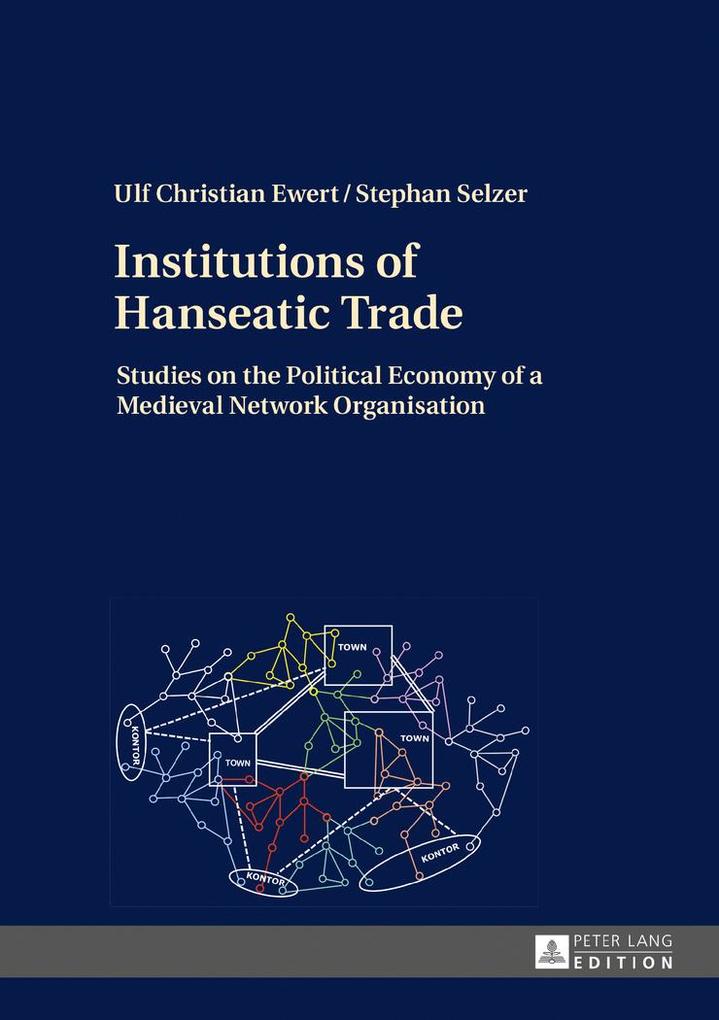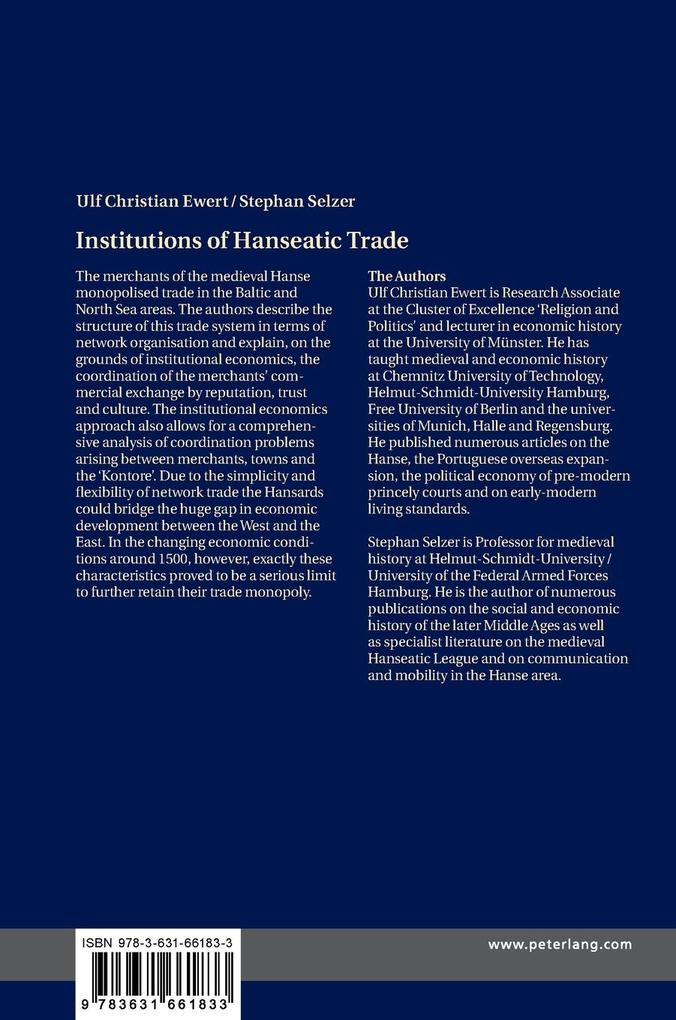
Zustellung: Sa, 26.07. - Mi, 30.07.
Versand in 7 Tagen
VersandkostenfreiBestellen & in Filiale abholen:
Structure and coordination of the Hanse's network trade system are analysed in an institutional economics framework. Simplicity and flexibility of this medieval network organisation enabled Hansards to bridge existing gaps in the econcomic development of northern Europe, but also contributed to the later decline of Hanseatic trade after 1500.
The merchants of the medieval Hanse monopolised trade in the Baltic and North Sea areas. The authors describe the structure of their trade system in terms of network organisation and attempts to explain, on the grounds of institutional economics, the coordination of the merchants' commercial exchange by reputation, trust and culture. The institutional economics approach also allows for a comprehensive analysis of coordination problems arising between merchants, towns and the 'Kontore'. Due to the simplicity and flexibility of network trade the Hansards could bridge the huge gap in economic development between the West and the East. In the changing economic conditions around 1500, however, exactly these characteristics proved to be a serious limit to further retain their trade monopoly.
Inhaltsverzeichnis
Hanse History and Economics - Reputation, Trust and Culture - A 'Small World' - Bridging Distances, Filling Gaps - State of Cities, Commercial Super Trust or Virtual Organisation? - Competitive Advantage or Limit to Business? - Perspectives of Research into Hanseatic Trade
Produktdetails
Erscheinungsdatum
30. November 2016
Sprache
englisch
Auflage
1. Auflage
Seitenanzahl
196
Autor/Autorin
Ulf Christian Ewert, Stephan Selzer
Verlag/Hersteller
Produktart
gebunden
Abbildungen
12 Abb.
Gewicht
373 g
Größe (L/B/H)
216/153/16 mm
ISBN
9783631661833
Entdecken Sie mehr
Pressestimmen
«Ulf Ch. Ewert und Stephan Selzer haben es geschafft, der internationalen Forschungdie Bedeutung der Hanse aus ökonomischer Sicht mit modernen Theorien zu verdeutlichen und der heimischen Hanseforschung Instrumente an die Hand zu geben, deren Nichtbeachtung in Zukunft nicht mehr möglich sein wird. Endlich!»
(Carsten Jahnke, Zeitschrift für Historische Forschung, 44/4 2017)
(Carsten Jahnke, Zeitschrift für Historische Forschung, 44/4 2017)
Bewertungen
0 Bewertungen
Es wurden noch keine Bewertungen abgegeben. Schreiben Sie die erste Bewertung zu "Institutions of Hanseatic Trade" und helfen Sie damit anderen bei der Kaufentscheidung.










